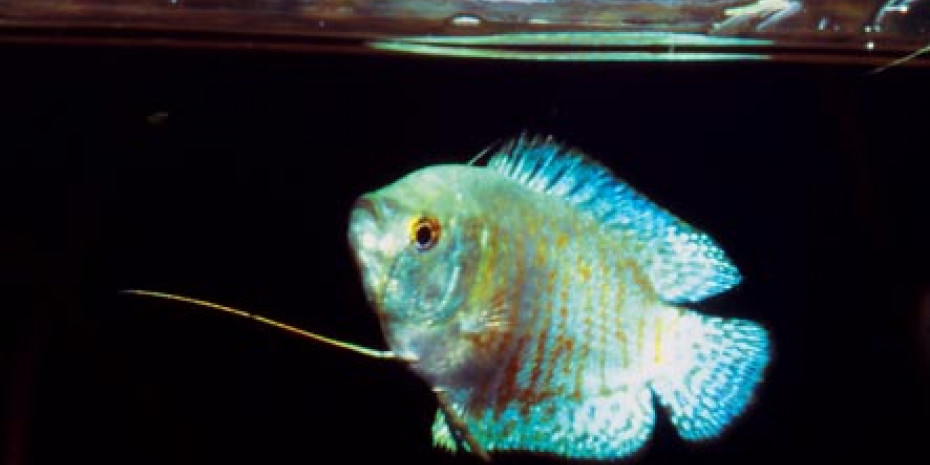According to this student, "the GIV has been considered to be exotic to Australia". Iridoviruses are known to cause several diseases in fish, perhaps the best known being cauliflower disease or lymphocystis. While this particular disease looks quite spectacular, owing to the large cauliflower-like growths it can produce, it is not one of the more virulent iridovirus diseases. Others, however, can cause serious internal damage, for example, to blood cells. In one of the studies carried out, during which gouramis were kept in the same tanks as specimens of Murray cod (Macullochella peelii peelii), the latter picked up the virus from the former. The Murray cod is an important Australian game fish that can grow to l.8 m in length and weigh around 114 kg. It is also regarded by the World Conservation Union (IUCN) as being critically endangered, although the latest news I have is that its perceived level of threat could soon be lowered to the endangered category. Irrespective of how critically endangered or otherwise the species may be, the fact remains that it showed itself as being capable of picking up the GIV pathogen, albeit under laboratory conditions. This, of course, has raised considerable concern within Biosecurity Australia, the government department responsible for controlling import policies. Adding fuel to the concern was a further finding that detected the virus in "clinically normal ornamental finfish after 28 days."
Gouramis are the latest species to come under close scrutiny in Australia. Photo: John Dawes
As a result, Biosecurity Australia has commissioned a further study to investigate what it refers to as "disease events of ornamental finfish in quarantine". This project will last for one year and will focus not just on gouramis, but on goldfish, cichlids and livebearers as well. Once the studies have been completed, Biosecurity Australia will contact stakeholders as part of its review process, during which it will circulate a policy review document. Subsequent to that, a policy decision will be made. This may opt to retain the current quarantine regula-tions or make them more demanding. As things stand at the moment, the law requires that gouramis be kept at holding premises for a minimum of 14 days prior to export, followed by a further period of 'post-arrival' quarantine of a minimum of 14 days' duration. In addition, all imports of gouramis must be accompanied by a health certificate stating that they are sourced from stocks that are…

 Menü
Menü







 9-10/2005
9-10/2005












 Newsletter
Newsletter